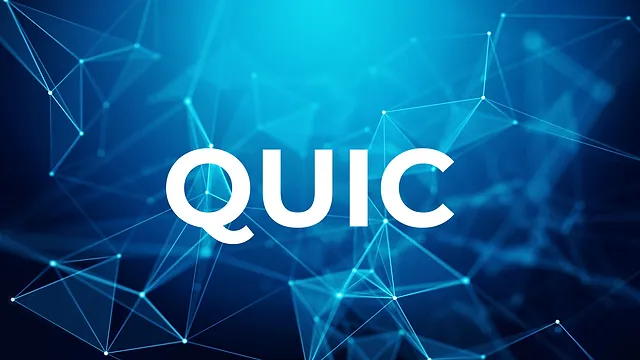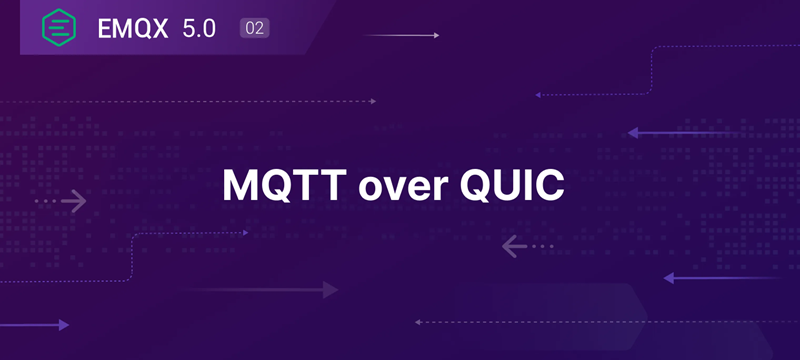QUIC (Quick UDP Internet Connections) is a revolutionary transport layer protocol developed by Google to enhance the efficiency and speed of the internet. The protocol is designed to overcome the limitations of the traditional TCP (Transmission Control Protocol) and HTTP (Hypertext Transfer Protocol), which are the foundation of data communication on the internet. QUIC significantly improves the performance of web applications by reducing connection establishment time, improving congestion control, and providing multiplexing without head-of-line blocking.
It minimizes latency by establishing a connection with a single round-trip, rather than the multiple round-trips required by TCP. This is particularly beneficial for mobile devices, where network connectivity is often unstable. Furthermore, QUIC’s packet pacing mechanism helps to avoid network congestion by evenly distributing packet transmissions over time. Besides, it also supports forward error correction, which allows the recovery of lost packets without retransmission, thus speeding up data delivery. Through these innovative features, QUIC is transforming the internet industry, paving the way for a faster and more reliable online experience.
However, it is not without challenges. The use of UDP instead of TCP presents compatibility issues with some firewalls and middleboxes, which are typically configured for TCP traffic. Additionally, the encryption of QUIC headers poses difficulties for network management and traffic analysis. Yet, despite these obstacles, QUIC’s potential in enhancing internet performance is undeniable, and its adoption is expected to grow as its benefits become more widely recognized.

Key Features of QUIC Protocol
QUIC (Quick UDP Internet Connections) Protocol is a transport layer protocol developed by Google to improve the performance of web applications by decreasing latency. One of the key features of QUIC Protocol is that it uses UDP (User Datagram Protocol) instead of TCP (Transmission Control Protocol) to establish connections between server and client. This results in faster connection times as QUIC eliminates the round-trip time usually required by TCP, thus enhancing the speed of data transmission.
Moreover, QUIC Protocol provides built-in encryption, which is a crucial feature for ensuring data security. It uses the same encryption technology as Transport Layer Security (TLS), which is the standard for secure web browsing. This means that QUIC by default secures all its connections, unlike TCP which requires an additional layer (SSL/TLS) to secure data.
Another noteworthy feature of the QUIC Protocol is its improved congestion control. This is achieved by using a method called packet pacing that reduces packet loss and thus, improves the overall network performance. Furthermore, QUIC allows for multiplexing without head-of-line blocking, meaning that multiple streams can be active at the same time without one stream blocking another. This is a significant improvement over TCP, where a lost or delayed packet can stall all subsequent packets.
Lastly, QUIC Protocol supports connection migration, meaning that it can maintain a connection even when the client changes its IP address. This is particularly useful for mobile devices that often switch between different network interfaces. All these features combined make QUIC Protocol an innovative tool for enhancing the performance and security of web applications. It’s an impressive stride forward in the realm of internet technology, promising faster, safer, and more reliable connections.

Benefits of QUIC for Web Performance
QUIC (Quick UDP Internet Connections) is a transport layer protocol developed by Google to enhance web performance. Its benefits for web performance are numerous. Firstly, it significantly reduces connection establishment time. Traditional protocols like TCP require multiple round-trip times (RTTs) to establish a connection, whereas QUIC requires zero to one RTT. This leads to faster page loads, which is particularly beneficial on mobile devices and slow networks. Secondly, QUIC mitigates the impact of packet loss, which can severely affect web performance. It does this by eliminating head-of-line blocking, a problem where the loss of a single packet halts the transmission of all subsequent packets.
Moreover, QUIC provides a secure connection by default. It utilizes the same encryption standards as TLS, but combines the transport layer and cryptographic layer, resulting in fewer round-trip exchanges and faster secure connections. Additionally, QUIC’s built-in congestion control and avoidance mechanism ensures that the network is not overwhelmed with traffic, thereby maintaining a high level of performance.
QUIC is also highly adaptive. It allows for protocol evolution without requiring changes to the underlying transport layer, which is not the case with TCP. This feature allows for quicker deployment of new features and improvements to the protocol.
Furthermore, QUIC supports multiplexed streams over a single connection. This reduces the number of connections a client needs to open, leading to reduced overhead and improved performance.
Lastly, QUIC is designed to work well with HTTP/3, the latest version of the Hypertext Transfer Protocol. Together, they provide a more efficient, secure, and robust service for transporting web content.
In conclusion, QUIC provides numerous benefits for web performance. It reduces latency, mitigates packet loss, ensures secure connections, manages congestion, supports protocol evolution, and works seamlessly with HTTP/3. These features enhance the user experience by providing faster, more reliable, and more secure web browsing.
Comparing QUIC with TCP and UDP
QUIC (Quick UDP Internet Connections) is a transport protocol developed by Google to enhance the performance of web applications by reducing latency, as compared to TCP (Transmission Control Protocol) and UDP (User Datagram Protocol). QUIC combines the speed of UDP with the reliability of TCP, and is designed to maintain high-speed connections even when a user changes their network or experiences poor connectivity. Unlike TCP, QUIC does not require a round-trip handshake before data transfer begins, which significantly expedites the connection process. Furthermore, it uses a congestion control and loss recovery mechanism that is more responsive than TCP, enabling smoother streaming and fewer interruptions.
In comparison, TCP, while reliable, can be slower as it requires a three-way handshake to establish a connection, which can lead to delays. TCP also suffers from “head-of-line blocking,” where if a packet of data is lost, all following packets must wait in line until the lost packet is retransmitted and received, causing further delays. On the other hand, UDP is faster than TCP as it does not involve any handshake process or error recovery, but this also makes it less reliable as it does not guarantee delivery of packets.
In contrast, QUIC overcomes these limitations by ensuring that lost packets do not affect the transmission of subsequent packets, thereby reducing latency. It also incorporates forward error correction to recover from packet loss without needing retransmission. Moreover, QUIC supports multiplexed streams over the same connection, which is not possible with TCP or UDP. This means that a single QUIC connection can handle multiple streams of data, reducing the need for multiple connections and further increasing efficiency. Therefore, while TCP and UDP each have their strengths and weaknesses, QUIC appears to offer a compelling combination of speed, reliability, and efficiency, making it a promising protocol for future web applications.

Implementation Challenges of QUIC
QUIC, which stands for Quick UDP Internet Connections, is a transport layer protocol developed by Google to improve web page load speed and provide security protection equivalent to TLS/SSL. However, despite its potential benefits, the implementation of QUIC faces numerous challenges. One of the primary issues is that it is relatively new and not fully standardized, causing interoperability problems with existing internet infrastructure. Network operators and ISPs have to make significant changes to their existing systems to support QUIC, which can be costly and time-consuming.
Another concern is that QUIC’s reliance on UDP can lead to difficulties with middleboxes, such as NATs and firewalls, which are traditionally designed to handle TCP traffic. The lack of visibility into QUIC traffic also presents challenges for network management and security monitoring, as traditional tools for these purposes are not compatible with QUIC. Additionally, QUIC’s encryption features, while enhancing privacy and security, can make it harder to detect and manage potential threats. Moreover, there is a need for further research to fully understand the impact of QUIC on network performance and quality of service.
Finally, there are also questions about the scalability of QUIC and whether it can effectively handle high volumes of traffic without causing congestion or other issues. Despite these challenges, it is clear that QUIC has the potential to significantly improve the performance and security of internet communications. However, its successful implementation will require addressing these issues and developing solutions that allow it to coexist with existing protocols and infrastructure.

The Future of Internet Traffic with QUIC
The future of internet traffic is rapidly evolving with the implementation of Quick UDP Internet Connections (QUIC). As a transport layer network protocol, QUIC was developed by Google to enhance the performance of web applications that are currently using TCP. This innovative protocol is designed to reduce latency and improve speed, thus providing an optimized and seamless internet experience for users. The core benefit of QUIC lies in its ability to establish a connection with minimal delay, making it an ideal solution for real-time communication applications.
QUIC’s potential for shaping the future of internet traffic is vast. It leverages UDP instead of TCP, which allows it to bypass many of the issues associated with TCP’s congestion control and loss recovery. This results in a more efficient, faster, and reliable internet connection. Furthermore, QUIC incorporates several features that are typically found in user-space libraries, such as faster connection establishment, improved congestion control, and forward error correction.
One of the most significant advantages of QUIC is its ability to multiplex multiple streams over a single connection without the “head of line blocking” problem that plagues TCP. This means that if a packet is lost in one stream, the other streams can continue unaffected, ensuring a smoother flow of internet traffic.
In addition, QUIC’s built-in encryption feature offers a higher level of security compared to TCP, providing not just speed but also protection for users. With all these advantages, QUIC is poised to revolutionize the way we experience the internet. As we move towards a more digital world where real-time, secure, and efficient internet connection is crucial, QUIC’s contribution to shaping the future of internet traffic becomes increasingly significant. As such, it’s clear that QUIC has the potential to significantly impact the future of internet traffic, leading to faster, more reliable, and more secure online experiences.
